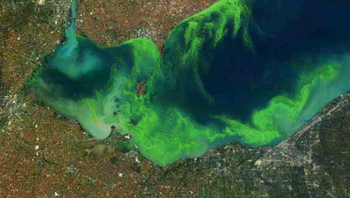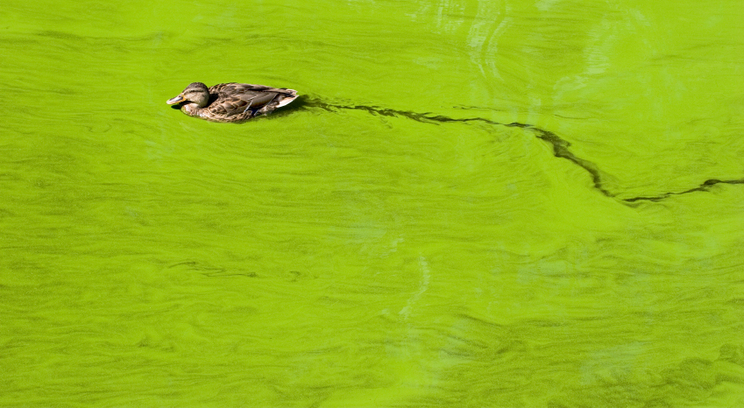Linking phosphorous, nitrogen and algae
For a scientist, you know you’ve arrived if you are published in Science, one of the world’s leading scientific journals. Peer-reviewed, it is the academic journal of the American Association for the Advancement of Science.
Science, with a broader appeal than more narrowly focused, discipline-specific scientific journals, is circulated weekly with a print subscriber base of about 130,000. With institutional subscriptions and online access, its estimated readership is one million people.
On its website, Science describes itself as:
Founded in 1880 on $10,000 of seed money from the American inventor Thomas Edison, Science has grown to become the world's leading outlet for scientific news, commentary and cutting-edge research, with the largest paid circulation of any peer-reviewed general-science journal. … Its articles consistently rank among the world's most cited research.
“A big deal”
In other words, in layman’s terms, it’s a big deal to be published in Science. Dr. Terry Langan, dean of the College of Arts and Sciences, referred to it as “a really big deal.”
“It is widely read by all types of scientists and nonscientists, too,” he noted. “Since there are scientists at major research universities who have been unable to publish in Science, I believe that Dr. Small’s success is further evidence of the opportunity that our students have to do high-quality research with UST scientists.”
Dr. Gaston “Chip” Small, an assistant professor in the Biology Department, College of Arts and Sciences, is the co-author (with University of Minnesota professors Drs. Jacques Finlay and Robert Sterner) of “Human Influences on Nitrogen Removal in Lakes,” which was published in the Oct. 11, 2013, issue of Science; however, as prestigious as being published in Science may be, Small believes that what the research discovered is far more important.
The report
The report focused on the indirect relationship between phosphorus levels and nitrogen removal in water ecosystems.
The report, based on a three-year study (2010-2012), was significant, Small said, because it was the “first to show that actually improving the phosphorus situation could make the nitrogen situation worse and ultimately make it worse for downstream ecosystems.”

This satellite image shows how serious the algae bloom problem was in 2011 in Lake Erie. At its peak, the bloom covered 990 square miles of the lake. Recent research has shown that the excess nitrogen from Lake Huron and Lake Superior (caused by cleaning up phosphorous) is contributing to algae blooms in Lake Erie. (NOAA/NASA image)
Typically freshwater ecosystems are “phosphorous-limited,” Small said. “If you add more phosphorous you get more algae. If you get more algae that tends to give you a muckier environment at the bottom of the lake. Muckier sediments provide a better environment for nitrogen removal through denitrification."
“The paradox here – why this is an interesting story – is that phosphorous is bad in that it turns our lakes green,” Small added. “We’ve done a good job in the last 30 or 40 years of cutting down on the amount of phosphorous going into lakes, but a side effect of that is it has made these lakes less efficient at removing nitrogen.”
While a low level of phosphorous helps keep lakes clean, those lakes become inefficient at removing nitrogen from the water. The resulting rise in nitrogen levels can ultimately adversely affect water quality downstream and in coastal areas by spurring the growth of algae blooms.
“Once these higher nitrogen levels get to the coast, that’s where it’s really a problem. In freshwater lakes it’s typically phosphorous that’s the main cause of algae blooms, but for some different reasons coastal ecosystems tend to be nitrogen-limited,” Small said. “It’s nitrogen coming out of the Mississippi River that’s responsible for the Gulf of Mexico’s dead zones. And there are lots of similar dead zones all along the coasts of the Great Lakes, ultimately draining into the St. Lawrence River system. The nitrogen that builds up in these lakes ultimately makes it out to the coast and it’s going to cause problems there.”
Small notes that it’s an interesting example of how trying to fix one environmental problem can inadvertently worsen another problem.
Further study
Small points out that the researchers still have data to analyze, other papers to write, and further research to conduct, but this much is known for certain at this point, based on the report published in Science:
“The main conclusion is that by cleaning up the phosphorous in lakes, by reducing the amount of phosphorous going into large lakes, it reduces the capacity of these lakes to remove nitrogen," Small said. "It’s a complex interaction between different desirable outcomes that we have. I think it argues for taking a holistic look at environmental problems. I think there’s always a trap of focusing on one issue at a time. This is a case where if you focus on one issue you can inadvertently make another problem worse.”








